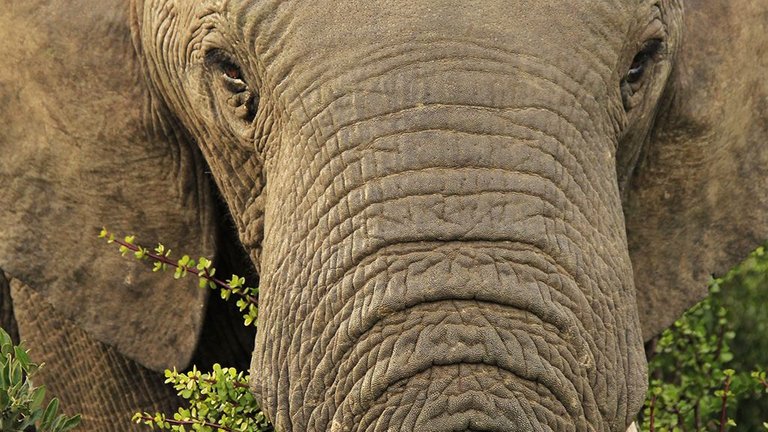
Shamwari Reserve - with thanks
"Eat what the wild animals and birds eat and you should survive." This was lesson one when I lived in the Game Reserve with lions, hyena and elephant as my immediate neighbours. Lesson two was how to find a suitable bed for the night out in the bush - where said lion and hyena wouldn't eat me while I dreamed under the starry African night. Lesson three was how to manage a rifle - gulp - should lesson two be compromised. Thankfully I never needed to actually handle or use the rifle. Understanding that I shouldn't touch anything, no matter how edible it looked, unless the birds were feasting has stood me in good stead. We live in a beautiful part of the country where there is a proverbial feast of edibles growing on the mountainside. However there are also plenty indigenous plants that are deadly. Learning the difference could be essential in the future. One succulent with amazing properties is the indigenous Spekboom - also known in English as Elephant Bush because it is a favoured part of the elephant's diet. Because part of our homesteading objective is to be self-sustainable I decided to do a test run, feeding the family from the veld.
This was the result:
Over the years I have slowly learned about the edible and medicinal vegetation that grows in our area. It has been an exciting journey. Many of the local, older people have successfully healed anything from a hangover to the C-word from the veld. When we first arrived we learned about Soutbossie (salt bush) and also Spekboom (Elephant Bush). Soutbossie is wonderful to eat. It tastes like salt and makes a spectacular addition to salads. Spekboom is rather an acquired taste - and I am not an elephant. The very young leaves are tasty but the more mature are extremely tart, leaving a bitter aftertaste.
My BuckarooBabies have not been damaged by the fastfood lifestyle and love eating from the veld. Spekboom leaves are among their favourite snacks. They helped me forage - from both veld and gardens - and we came up with a surprisingly delicious salad to enjoy with our freshly baked sourdough bread and a dollop of my fresh goats milk cream cheese.
Here's the Elephant approved Recipe!
INDIGENOUS SALAD:
1 cup Spekboom leaves, washed
1/2 cup Soutbossie leaves, washed
1/2 cup Mulberries (they're currently dripping off our trees)
1/2 cup Amaranth leaves, washed (they're like a weed in our gardens)
2 cups chickpeas, soaked and sprouted (cooking optional)
1 cup soaked and rinsed raw cashew nuts
Dollop of goats milk cream cheese OR vegan cheese.
If we had any ripe cherry tomatoes or cranberries I would've added them. Or avo, but sadly it is out of season for Avo.
SALAD DRESSING:
1 cup Tahini (I usually make my own)
1/2 cup spring water
1 lemon (juiced)
5/6 large medjool dates (I used honey)
Dash salt and pepper
Trying to keep with the theme of harvesting as much from the homestead as possible I used honey from our bee hives, however for the vegan option, a couple depitted dates are delicious in the salad dressing. Blend everything together and chill.
Spekboom (Portulacaria Afra) is a succulent indigenous to South Africa and more commonly found in the Western and Eastern Cape. It was used by ancient tribes to treat anything from heat stroke, dehydration, mouth sores, sunburn to bites. Apparently many tribal woman have eaten Spekboom to increase breastmilk. It is an extremely resilient plant. The Spekboom survived our 7 year drought where other hardy succulents died. Apparently a Spekboom survives with as little as a cup of water per year!
Knowing the Spekboom to be exceptionally high in Vitamin C - among other minerals - I added a sprig to our water. It was surprisingly delicious as a drink. In future I will add it when I make veggie juices. I have also learned that the crushed leaves can be used to treat skin complaints or as an antiseptic.
In the past, tribesmen building their mudhouses often uses the Spekboom as part of their rooves. I often see our wildbirds (including my little Sunbird family) sitting in the safety of the branches, so I can see why. It is very cool resting among the leaves. The Spring blossoms on the Spekboom are a riot of joyous pink. Their scent is very delicate and during the flowering the bees forage on the Spekboom. South Africa now has it's first carbon farm, exclusively growing the incredible succulent. It grows very simply and quickly from cuttings. Many farmers, ourselves included have started propagating and planting Spekboom on our borders.
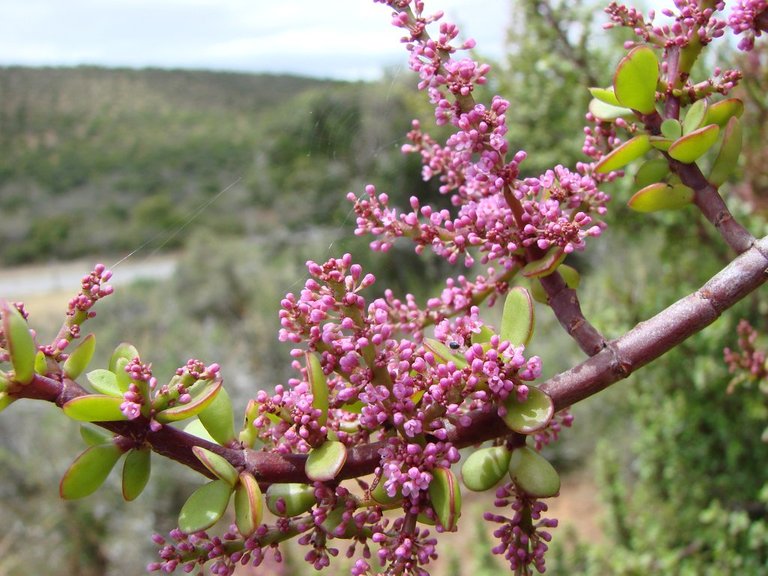
Shamwari Game Reserve say about Spekboom: "by acting like a carbon sponge, it improves the quality of air we breathe. More specifically, spekboom can absorb between four to ten tonnes of carbon per hectare. This incredible tree uses carbon to make plant tissue and produce oxygen. According to The Spekboom Foundation, spekboom’s“capacity to offset harmful carbon emissions is compared to that of moist, subtropical forests. This remarkable plant is unique in that it stores solar energy to perform photosynthesis at night. This makes a spekboom thicket 10 times more effective per hectare at carbon fixing than any tropical rainforest.”
So? Many of you may be wondering; "Did you actually enjoy the Elephant food??!!!!" Drum roll.....surprisingly....yes. It could become part of our almost daily diet, in various forms. Although we are a looooooooong way from living off the land. Having a sweetened and creamy addition to the salad definitely makes the sourness of the crunchy Spekboom leaves rather pleasant. I was very impressed with how enthusiastically the children joined the festivities. Perhaps the animals can learn from the BuckarooBabies what is edible in our veld! They certainly inspired us to test new flavours. And hopefully this is inspiration for this month's #gardenjournal!
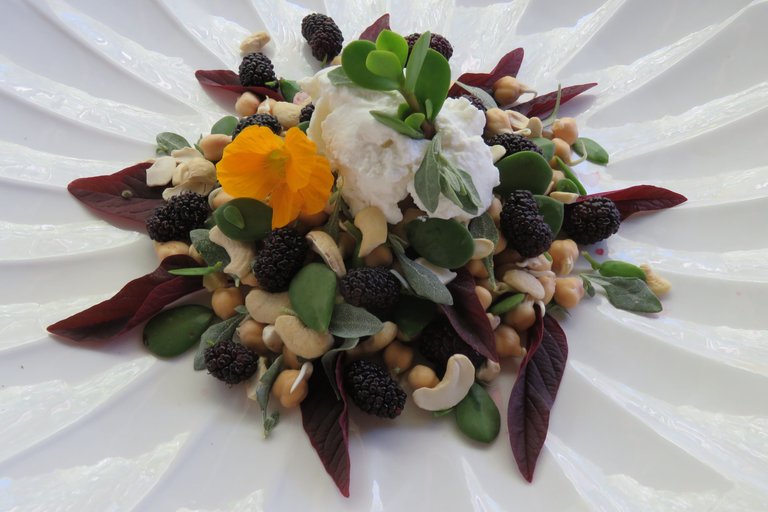
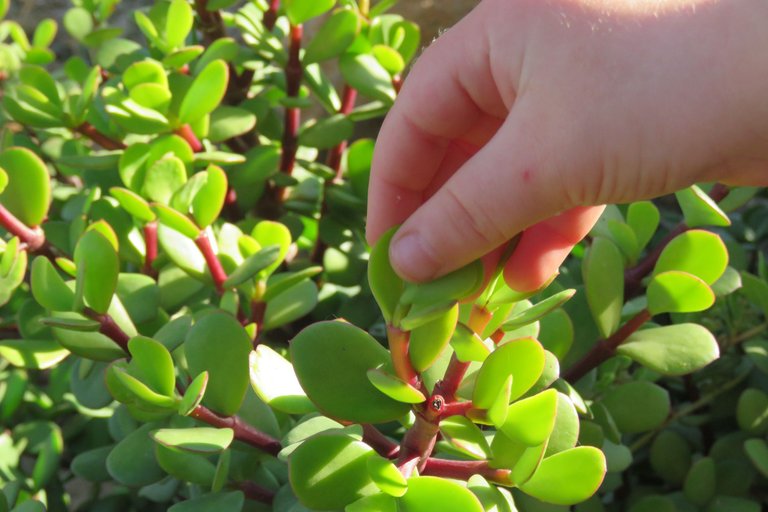
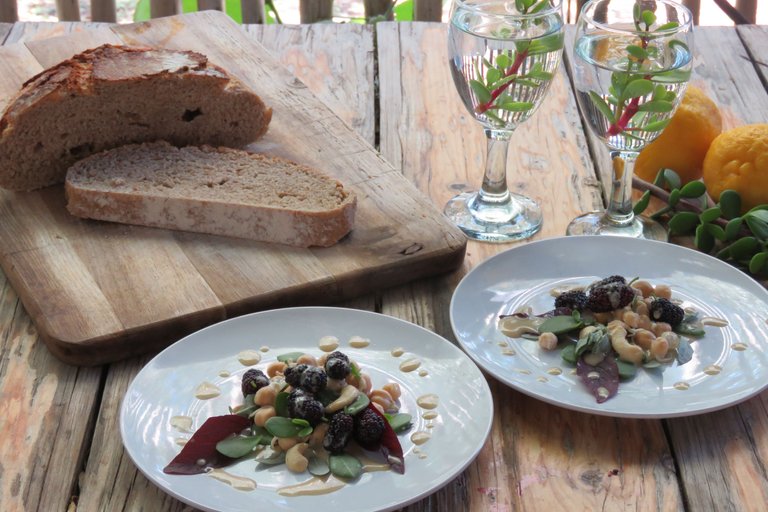

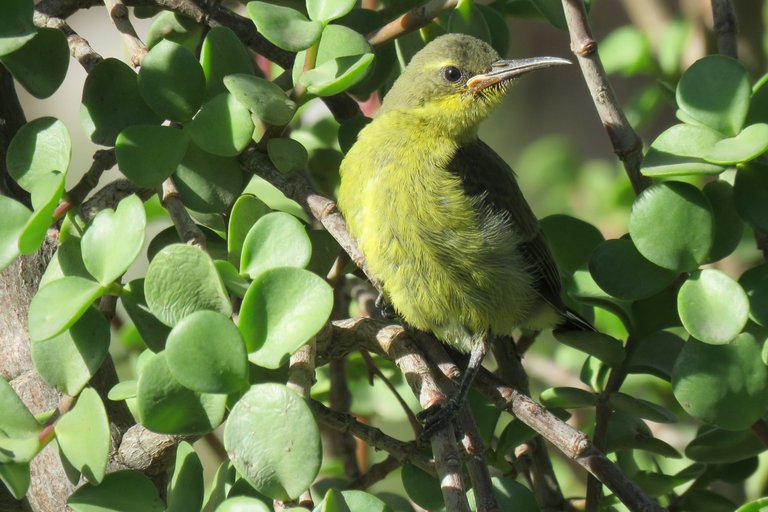
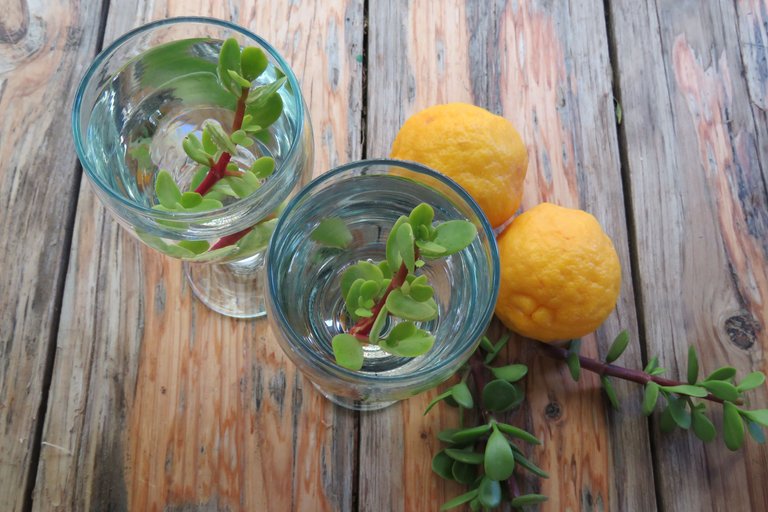
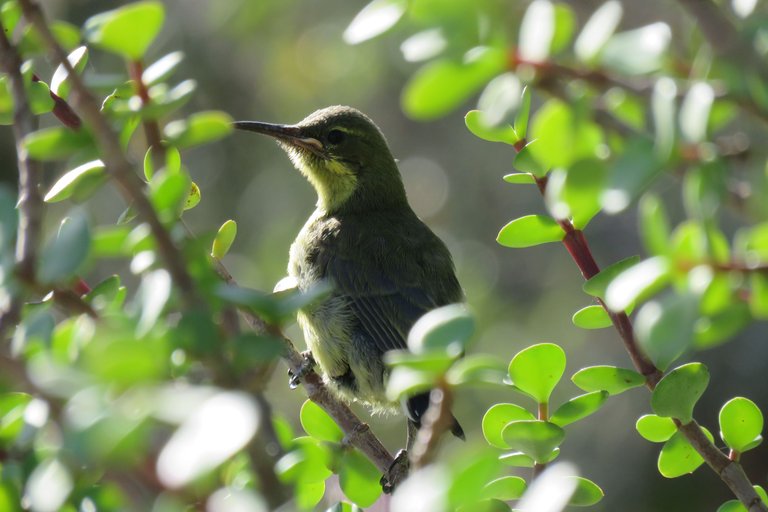
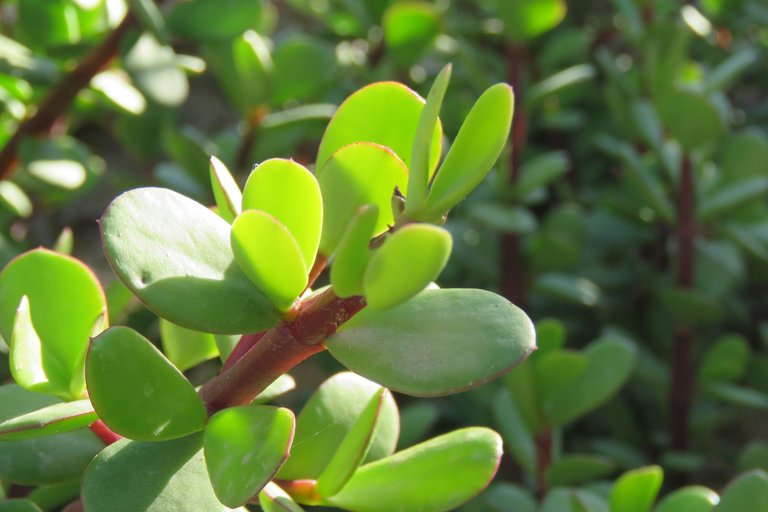
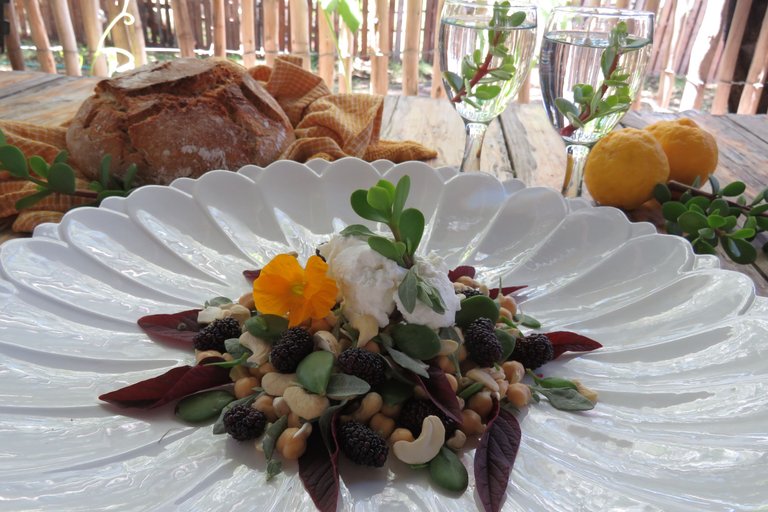
That looks beautiful and tasty!
When I first saw the Spekboom leaves and the sprigs in the glasses I actually thought for a moment it was purslane. Does it taste similar?
I wanted to write something along these lines in a separate comment, @buckaroobaby and @minismallholding. What I found to work wonderfully and that is super tasty, is to combine purslane and spekboom leaves in a salad! Maybe @buckaroobaby tried this already?? Does purslane grow there? I am so excited as my purslane started to grow now after the first summer heat and late rains. Awesome post @buckaroobaby! Really enjoyed reading it.
You have both reminded me about purslane. It doesn't really grow in areas that I walk through often enough to remember to use is. Lambs quarter? Now that is as much a weed as stinging nettle. All over the place. My goats love it. And it makes a more gentle flavoured leaf in salad
I am busy growing some lamb's quarter here with my marog and amaranth. I love them with spinach. They are a blessing, although as you mentioned (and if I can use Afrikaans) "binne perke". (Strangely my mind doesn't want to translate that into English 😅, rough week!)
Some expressions are just more effective in another language, ne? I can't do marog. I guess my liver disagrees with it. I've since heard that it has a rather nauseating effect on some. Marog causes me to throw up rather violently for 24 hours. Never touch the stuff
Oh my! I did not think it would do that 😅 Luckily all my meanderings in the garden and eating various wild herbs have done nothing to me yet. In fact, I think I am lucky that most things go down well and stay down well. 😅 Only time will tell, or until I eat the wrong thing.
I don't know if we get spekboom here in Australia, I'll have to look into that. If it was imported in the early settlement days it will be here, if not, they'll likely try to keep it out of the country. Southern African natives tend to grow a little too well here. 😅
Being spring, I've yet to see any signs of purslane yet, but my lamb's quarter is well underway, @buckaroobaby.
I had a discussion with some friends recently. South Africa and Australia have similar growing conditions. In my part of the Western Cape, we have major issues with Australian trees like Australian myrtle (Leptospermum laevigatum), black wattle (Acacia mearnsii), and coastal wattle (Acacia cyclops). It is so bad that we South Africans braai (aka bbq) with coastal wattle almost daily and refer to it as "rooikrans" braai wood. It is so funny how Australian natives have become weeds here and how South African natives have become weeds there (like the African daisy and pig's ear or arum lily).
I gather you have some of the gum trees there too. Crazy bushfire fuel...
I don't know if you call them soursobs there, but I read they come from southern Africa too. They grow like crazy in winter! Luckily the chickens like them.
Indeed! The last couple of wildfires and man-made fires most of the "experts" said that non-indigenous (alien) trees helped spread the fires quicker and made them more intense as the local fynbos burns differently; quicker and less intense fires.
Oh, yes! African wood-sorrel or Cape-sorrel. I love them in a salad, very tangy, although the oxalic content is quite high, hence the tanginess.
Not at all. It is more like aloe in taste. But in water it is surprisingly sweet
Interestingly for me, they taste super sour like lemons, probably some tannins in them? A quick google search and I could not find anything. Not that I can know how aloe tastes like 😅
If you take a lick of aloe you will know about it! Tannins is an interesting possibility
Fascinating and lovely post about this plant. I enjoyed reading it!
Thanks @goldenoakfarm!